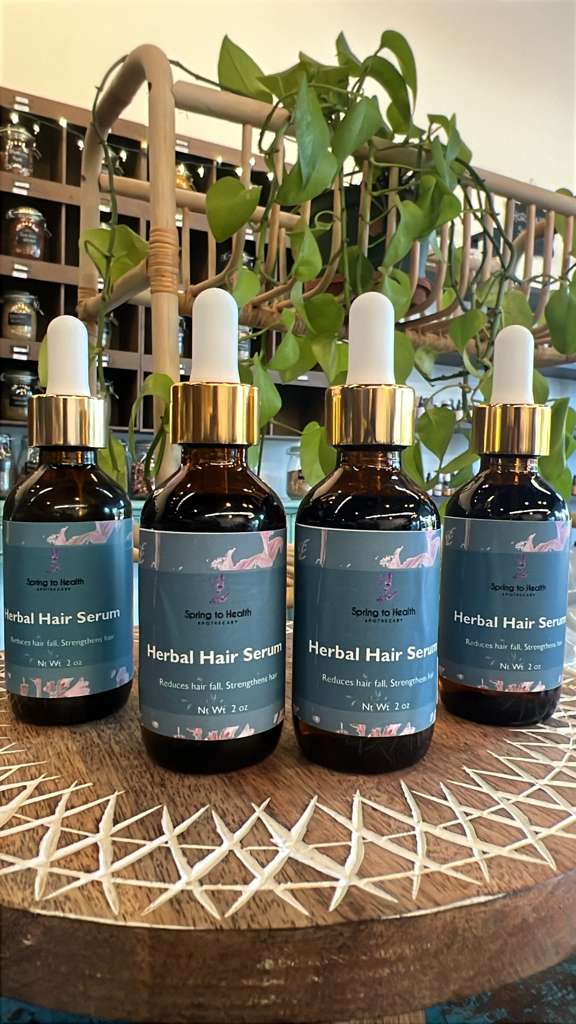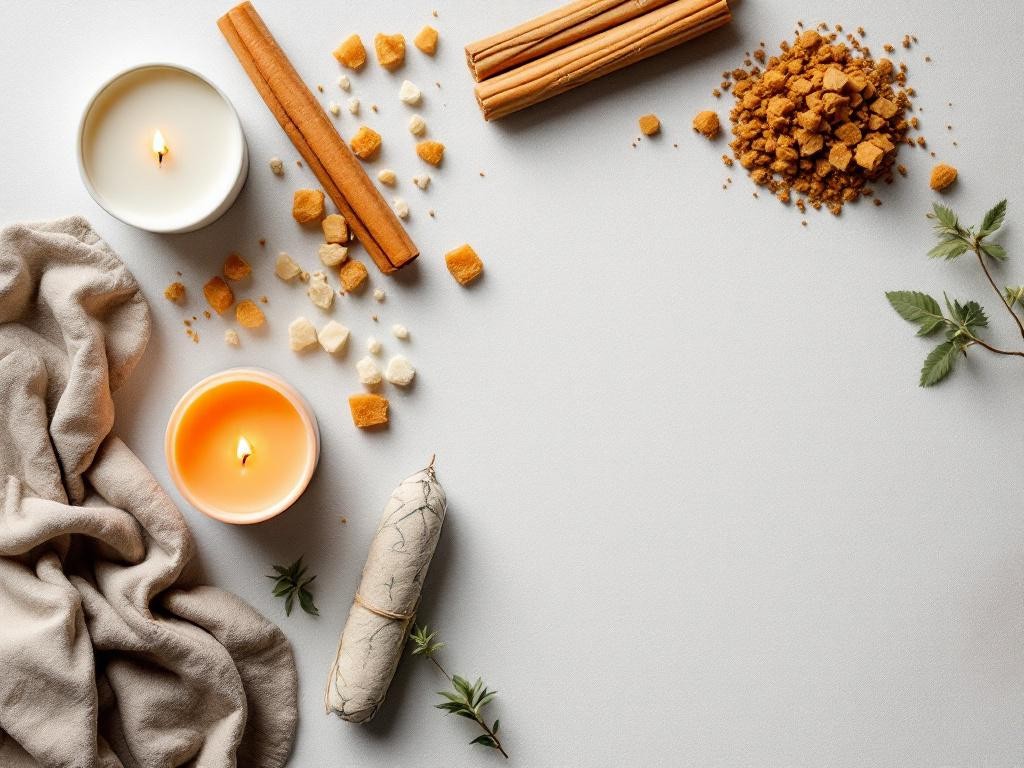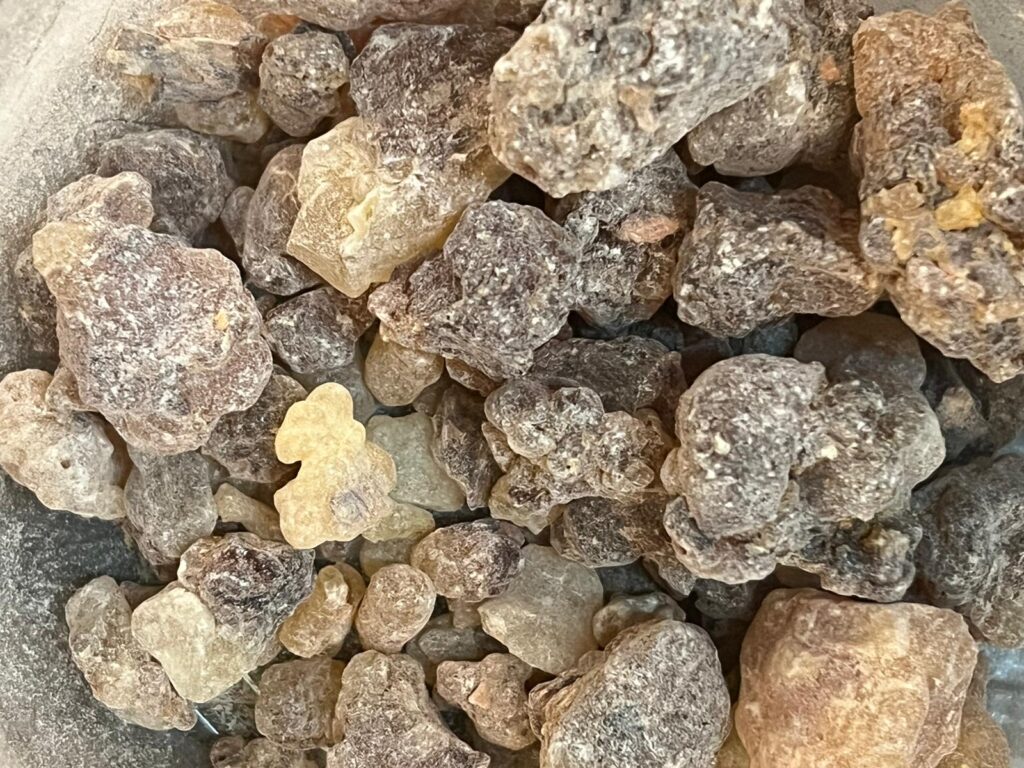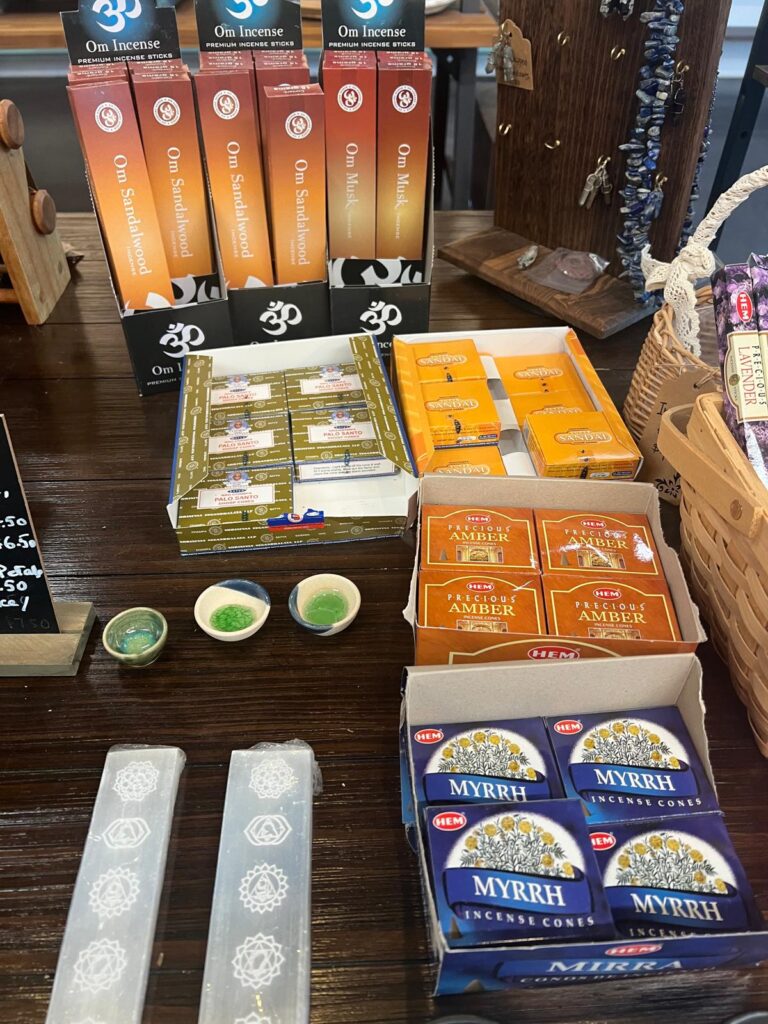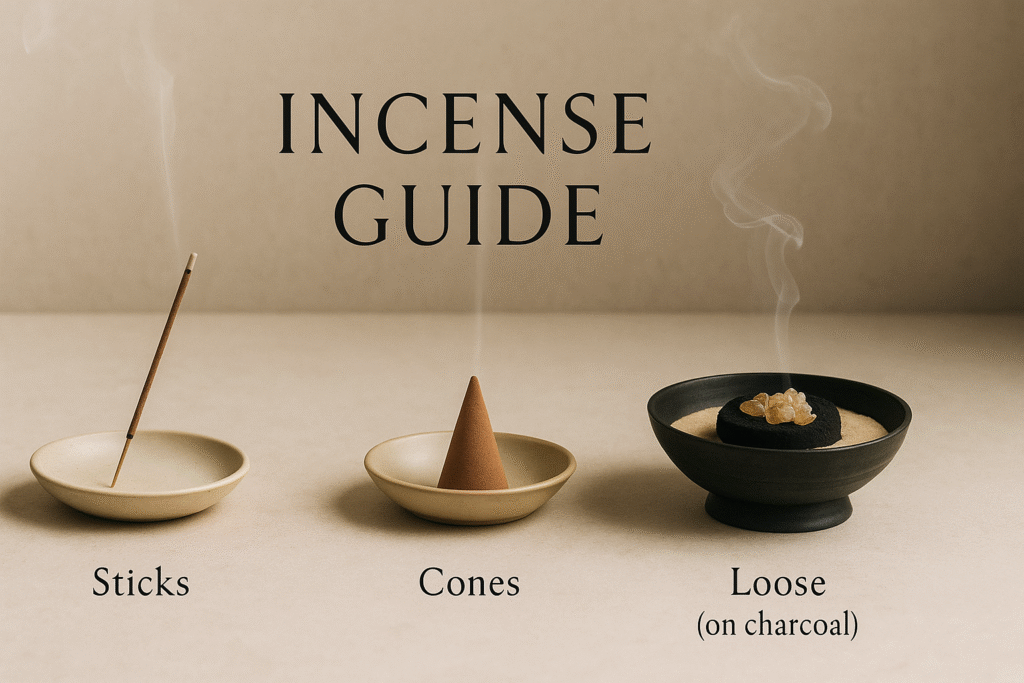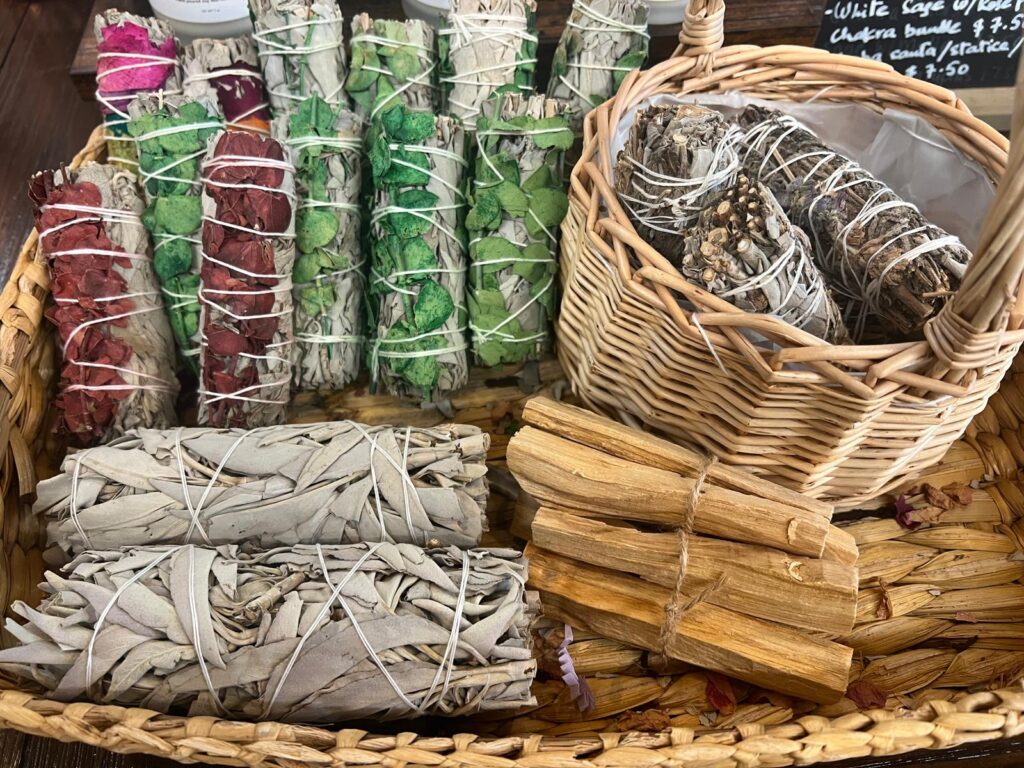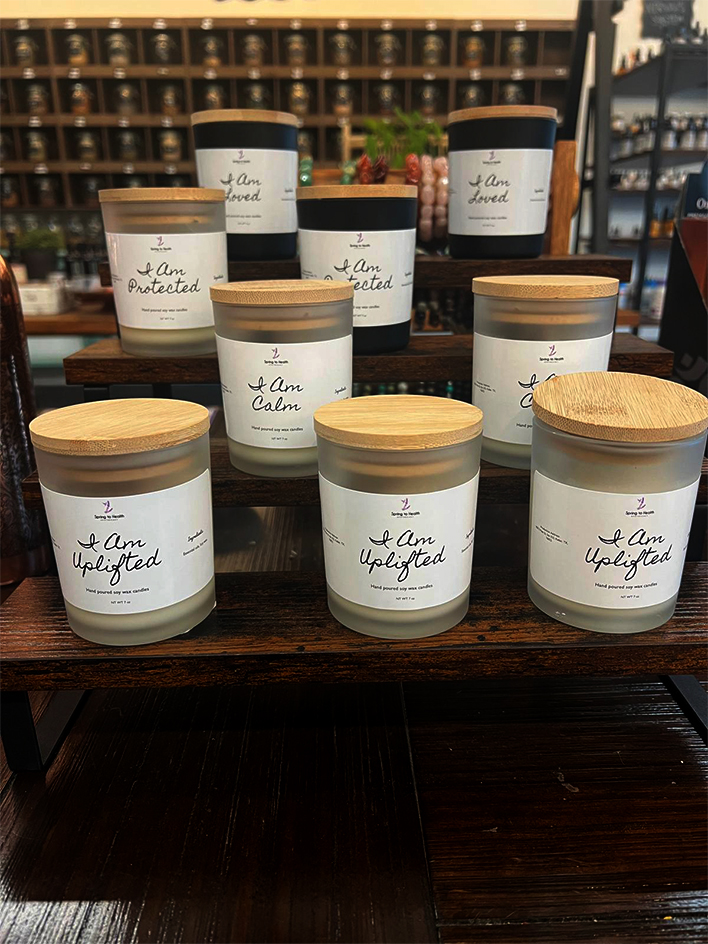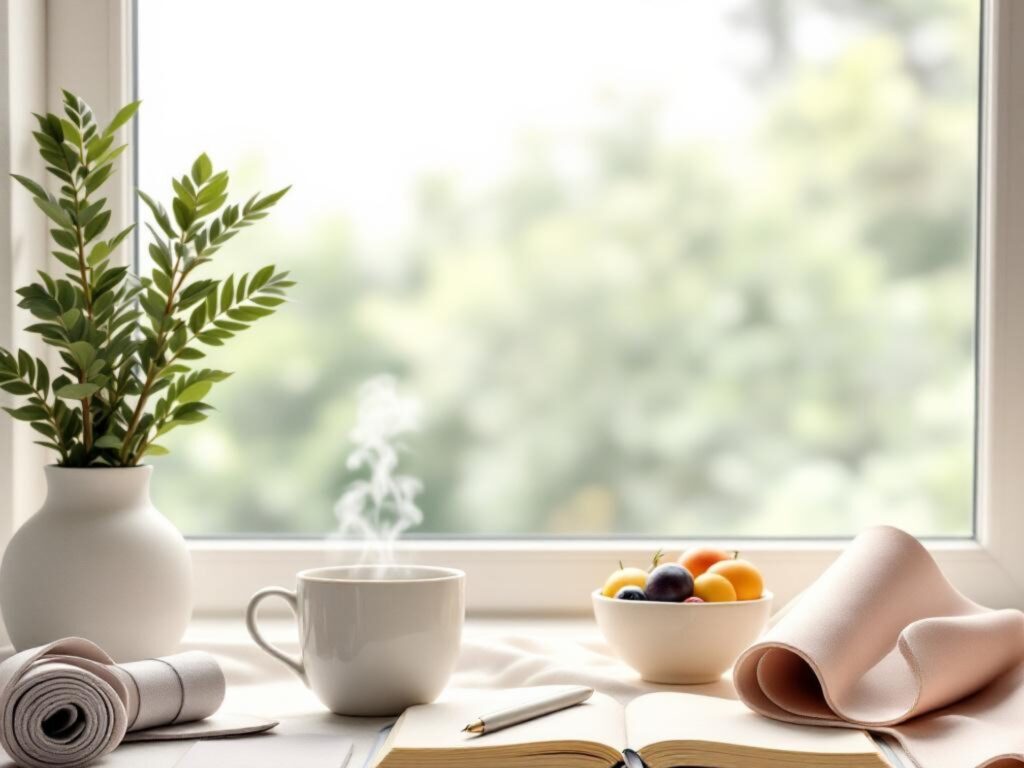Herbal Hair Serum: Stronger, Shinier, Happier Hair—Naturally
Why this serum? If your hair feels dry, breaks easily, or just won’t shine—meet our Herbal Hair Serum. It’s non-toxic, handmade, and preservative-free, crafted for real results without harsh additives. The formula is lightweight enough for daily shine, yet rich enough to reduce breakage, support growth, and restore moisture. Star ingredients (and why they work) Rosemary (infused + essential oil): Encourages a happy scalp environment and helps revitalize dull lengths. Horsetail: A classic herbal ally prized for its mineral content—think stronger-feeling strands over time. Unrefined Argan Oil: Feather-light nourishment for shine, softness, and frizz control without greasiness. Castor Oil: Rich and occlusive—perfect for sealing in hydration and supporting thicker-looking hair. Clean formula commitment: non-toxic, handmade, preservative-free—just plants and premium oils, blended with intention. What you’ll notice Less breakage & fewer flyaways: Ends feel smoother; mid-lengths tug and snag less. More shine, more softness: Hair looks glossy without feeling heavy. Scalp care that feels good: A few drops massaged in can make your scalp feel refreshed and balanced. How to use (by hair goal) For daily shine / frizz control Warm 1–3 drops between palms; smooth over dry or slightly damp hair, focusing on ends. Fine hair: start with 1 drop. Thick/curly: 3–5 drops as needed. For breakage & length retention After washing, apply 2–6 drops to damp ends; braid or twist loosely. Use a silk/satin pillowcase or bonnet to reduce friction overnight. For scalp support / growth routine Part hair; place 1–2 drops per section on scalp. Massage gently for 2–3 minutes (pads of fingers). Leave in (light routine) or pre-wash: apply 20–60 minutes before shampoo. Curly & coily hair Use as a sealing step over leave-in or cream (LCO/LOC). Scrunch a pea-size amount through ends to reduce halo frizz. Who it’s for Dry, frizzy, or damaged hair that needs moisture and smoothness. Fine to thick textures (just adjust the number of drops). Color-treated or heat-styled hair looking for extra shine and protection. Sensitive scalps seeking a clean, plant-forward formula. Pre-wash: 6–10 drops on scalp + ends. Massage: 2–3 minutes to boost circulation. Shampoo + condition as usual. Finish: 1–2 drops on towel-damp ends for extra slip and shine. FAQs Will it make my hair greasy?Not when used sparingly. Start with 1–2 drops, then build as your hair “drinks” it. Can I use it with heat styling?Yes—apply a small amount to damp ends before blow-drying, then a micro-drop after styling to polish. Is it safe for my scalp?It’s a gentle, non-toxic blend. As with any new product, do a patch test and discontinue if irritation occurs. How long until I see results?Shine and frizz control are immediate; breakage and strength improve with consistent use over several weeks. Why handmade matters Small-batch, handmade production allows us to choose unrefined oils, fresh herbal infusions, and minimal processing. That means more of the natural goodness makes it into your bottle—and onto your hair. No fillers, no mystery ingredients. Ready to revitalize your routine? Give your hair a clean, plant-powered upgrade. Our Herbal Hair Serum is designed to reduce breakage, boost growth, and restore moisture—with glossy, touchable results. Shop now: Herbal Hair Serum (in-store & online at Spring to Health)Pair it with: Calming Herbal Shampoo Bar (gentle cleanse) and Nourish & Shine Hair Tea Rinse (extra gloss on wash day). Editor & accessibility notes (optional) ALT text suggestion for product image: “Amber dropper bottle labeled Herbal Hair Serum beside rosemary and argan.” Internal links: Link “Herbal Hair Serum” to your product page; link any companion products mentioned. Schema: Use Product schema on the product page; this blog can use Article schema. Kind note: This content is educational and does not replace professional medical advice. If you have scalp conditions or allergies, consult your clinician.

